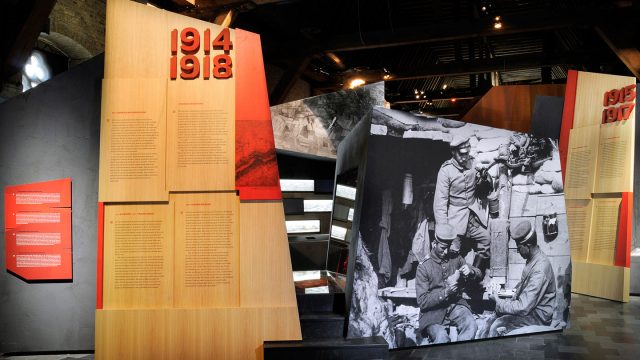The Battle of the Somme was one of the longest and most remembered battles of World War I. Fought in northern France, British and French armies fought the Germans for five months in a brutal battle of attrition on a 15-mile front.
The aim of the battle was to relieve the French army fighting at Verdun (North-East France) and to weaken the German Army. However, they were unable to break through German lines and as a result of this there were over one million soldiers dead and wounded on all sides.
Although this is one of the most well-known battles of the First World War, here are some facts that you may not have known…
- The Battle of the Somme was originally intended to be predominantly a French offensive
The original attack date was the 1st August 1916 and was intended to be a joint attack with the British and French troops attempting to drain the German forces of their reserves.
However, with the ongoing brutal German attack at Verdun, it was ordered that the date to be brought forward to 1st July 1916 in order to divert German resources from Verdun to defend the Somme, which meant the attack fell into British hands.
- The first day of the battle holds the record for most people killed in one day during war
1st July 1916 holds the record for being the bloodiest day of war. British forces, which included troops from Britain, Ireland, Newfoundland in Canada, South Africa and India had a shocking 57,740 casualties and almost 20,000 fatalities within the first 24 hours.
During the five months that would follow on the Somme, more than a million soldiers from both Allied and German armies with injured or lost their lives.
- There was a tree used as a landmark, which has been preserved and still stands today
Half way between the British and German trenches, one solitary apple tree still stood. The Newfoundland Regiment troops assembled by the tree but it provided little cover for them against the Germans making them easy targets for machine gun and heavy artillery fire.
The tree has been named ‘Danger Tree’ and still stands in Newfoundland Memorial Park today.
- British troops fired more than 1.7 million shells and bombs at German lines in the 7-day bombing leading up to the battle
British troops used heavy artillery fire and bombing in the hope that they would destroy the German trenches and barbed wire placed on the battlefield, allowing the British troops to walk their way across ‘no man’s land’ without enemy fire.
However, they underestimated how advanced the Germans lines were, so when trying to cross the land they were left open and vulnerable to the attack of the German troops.
- Tanks were used for one of the first times
50 tanks were sourced and deployed to the Somme in September 1916 to help troops with the battle of Flers-Courcelette (15-22 September 1916). However, the early machines were highly unreliable and this number halved due to mechanical and technical failures.
Some progress was made in the battle with the help of the tanks in a critical moment but despite the tanks and 15 divisions of men deployed, the British forces only gained under a kilometre of territory.
- After 141 days of fighting the British troops had only advanced 7 miles
The fighting lasted from 1st July 2916 – 18th November 1916 and resulted in an estimated 420,000 British casualties. Figures place French casualties at 200,00 while German casualties were at approximately 500,000 – all for what was just seven miles of land.
- 49 men received the Victoria Cross during the Battle of Somme
In the 70 years following World War II only 15 men were awarded the Commonwealth’s highest military honour, the Victoria Cross. And yet, during the five-month long Battle of the Somme, 49 men received this honour, including nine on the very first day of battle.
Visit our website or call us on 01332 347 828 and speak to one of our experts to start planning your tailor made trip!
